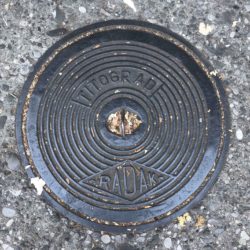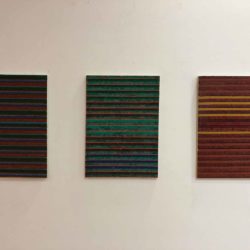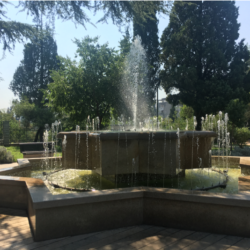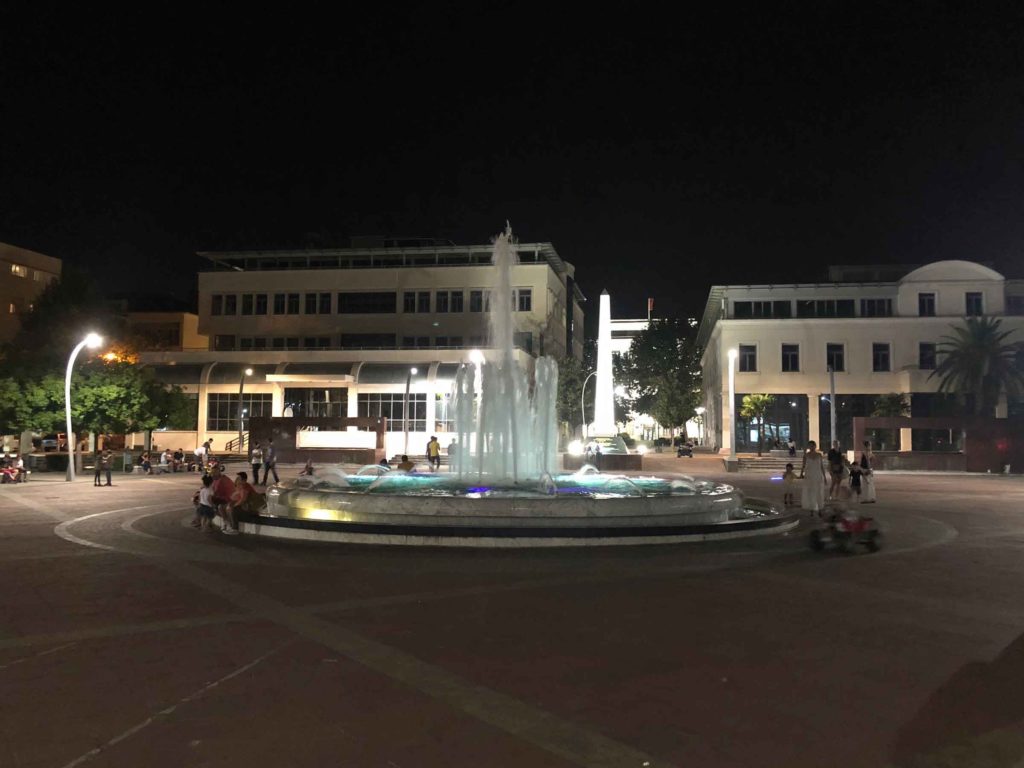
Podgorica is one world capital in which I never stepped foot on public transportation. City buses do trundle along the streets and for 80 cents they will take you where you need to go, but unless you have mobility issues, why bother? Podgorica is immensely walkable and it’s easy to craft a mini cultural tour for yourself on foot. (Next time I visit Podgorica, I vow to hop on a bus just to say I’ve done it, but you’ll probably wait longer for the next bus to arrive than if you had simply walked to your destination in the first place.)
Stara Varoš (Old Town)
By the Middle Ages, the Roman settlement of Duklja located 5km outside of present-day Podgorica, had been abandoned and the Slavic people who had settled in the region began germinating the seeds of a new city at the confluence of the Morača and Ribnica Rivers, which eventually blossomed into the beautiful new flower known as Podgorica. After the Ottoman Empire conquered Montenegro in the mid-15th Century, this area, today known as Stara Varoš (Old Town), defined Podgorica’s city limits up until the 20th Century.
The Ottomans brought their culture, architecture and religion to Montenegro, the influences of which can still be seen today. The ruins of the Tvrđava na Ribnici (Ribnica Fortress) can be visited along the banks of the Morača, but a stroll through Stara Varoš will reveal that there is more to discover than just the fortress. (The excellent Montenegro Hostel is also located in Stara Varoš, and besides the wonderful staff, it is perfectly situated to act as a base for your urban explorations.)
Sahat Kula (Clock Tower)
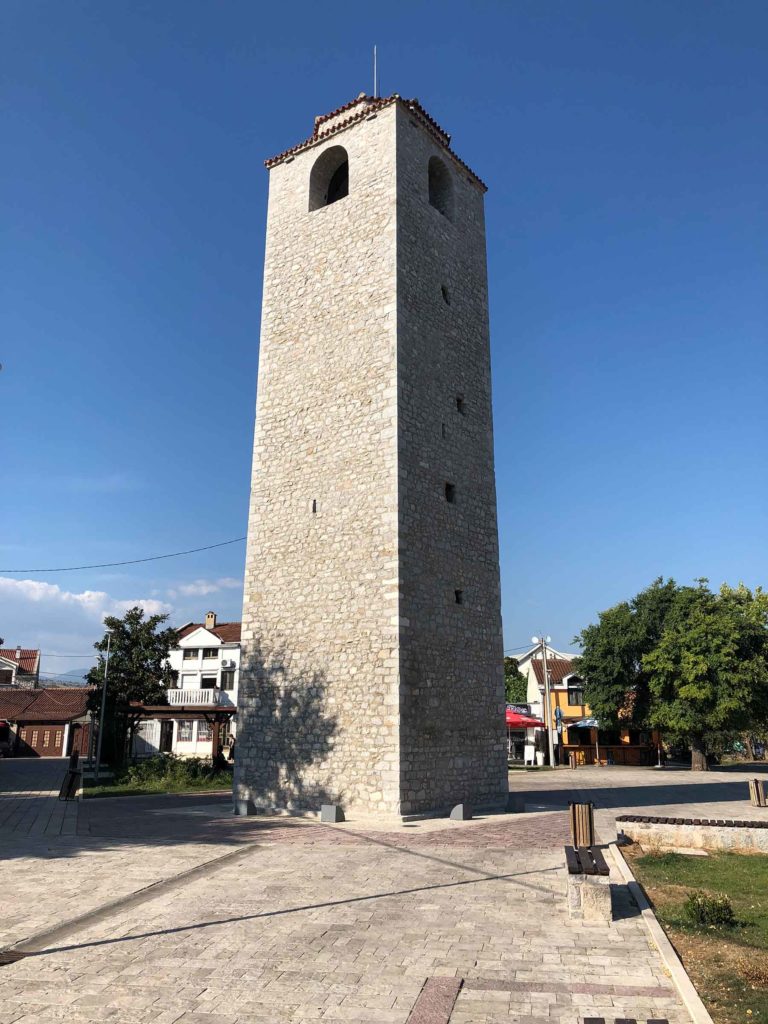
Stara Varoš was badly bombed during WWII, but one of the structures that remained intact was the Clock Tower, built in 1667. After the Ottomans were expelled from Montenegro, an Orthodox cross was placed on top of the tower to symbolize the victory of the Montenegrins over their occupiers. Unlike the rest of the modern capital, whose thoroughfares were mapped out in a grid-like fashion, Stara Varoš is made up of a spiderweb of winding streets and alleyways. If you ever get turned around, look up and use the Clock Tower to steer you in the right direction.
Starodoganska džamija (Starodoganska Mosque)

Built in the 15th Century, Starodoganska Mosque is one of two surviving Ottoman-era mosques in Stara Varoš. Outside of prayer sessions, you are more than welcome to enter the house of worship and take photos. About 20% of Montenegro’s population is Muslim and a large segment of Podgorica’s Muslims live in the area. The aromas wafting from Turkish bakeries and döner kebab joints linger in the air like a sweet perfume in the vicinity of the mosque.
One conversation I have oft overheard in hostel common rooms involves backpackers wanting to try authentic, local cuisine. I’m in Montenegro/Honduras/Benin/Vietnam- shouldn’t I only be eating Montenegrin/Honduran/Béninois/Vietnamese food? Yes and no. It’s natural to want to dive into the traditional food scene, but don’t be too rigid with your definitions of what “traditional” or “local” cuisine are.
Why go to Montenegro and eat Turkish food? Because Montenegro was once part of the Ottoman Empire for hundreds of years and now Turkish food is Montenegrin food too. This is what the locals eat. If you’re looking for that ever-elusive “authentic” experience, then go where the locals go, regardless of the ethnicity of the cuisine. Ironically, the most inauthentic eateries are the ones in the shadow of big ticket attractions, advertising “real” local food. These are often tourist traps that you would never catch a native frequenting.
Muzeji i Galerije Podgorice (Museums and Galleries of Podgorica)
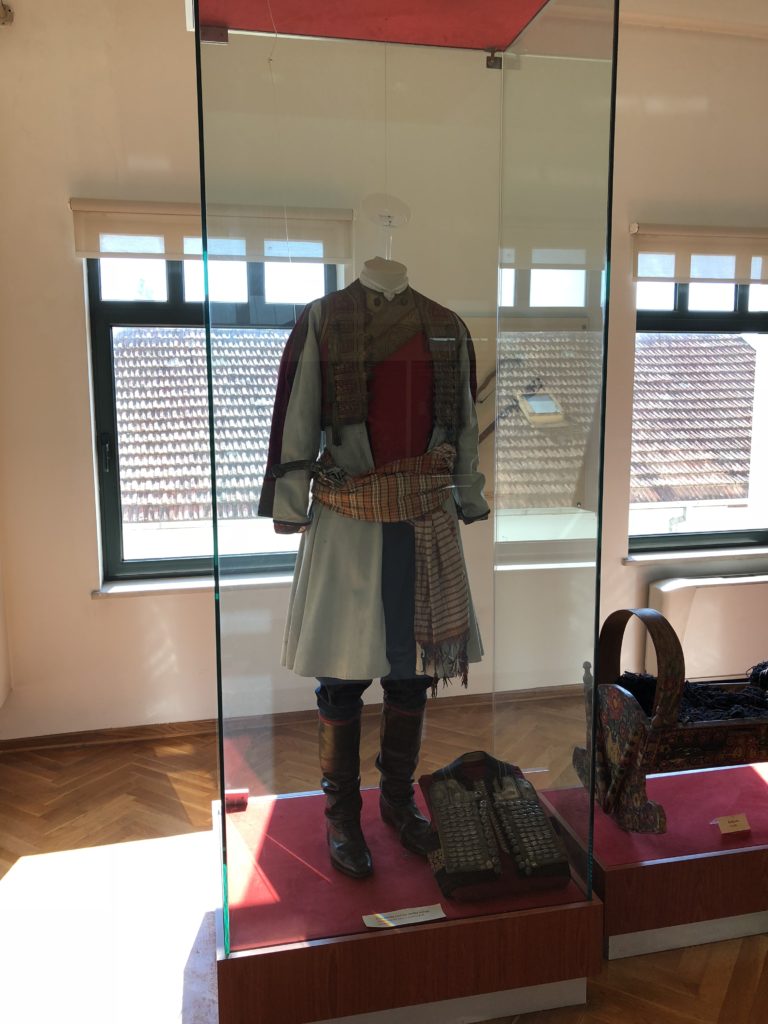
Haven’t we seen this before? Yes, I already took you through the City Museum’s artistic side, but let’s circle back now and check out the historical and ethnographic portion of the exhibitions. (Just a reminder: entry to the museum is completely free.)
The history wing traces Podgorica’s roots back to the ancient Roman city of Duklja, where pottery, jewelry and other artifacts have been discovered. The precious relics of Duklja are now catalogued and on display for all to see. There are also rooms dedicated to traditional Montenegrin clothing, sewing, and family life in the 19th Century.
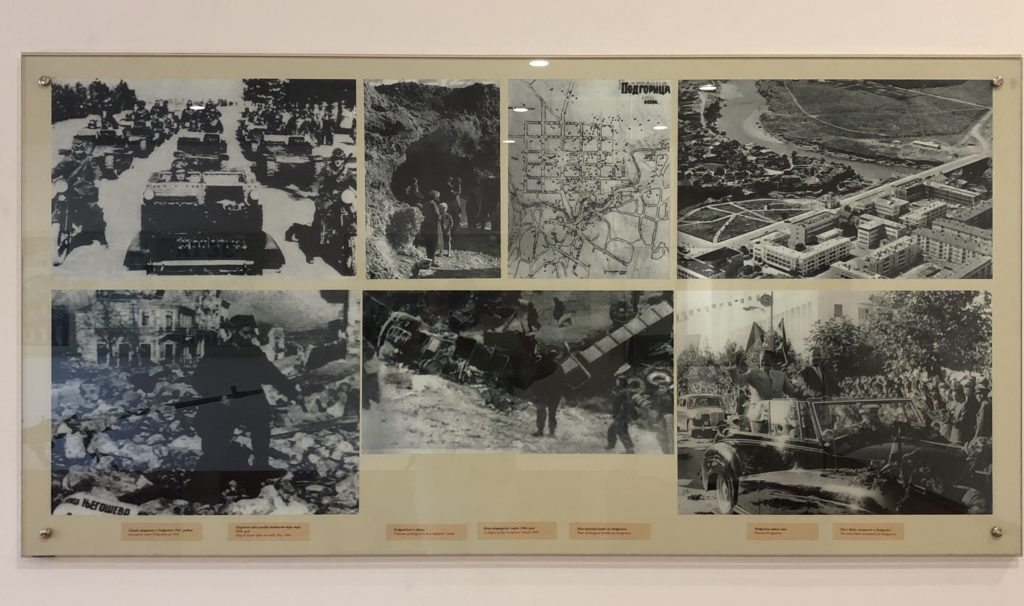
More interesting yet is the chapter on 20th-Century events, including the destruction of Podgorica in WWII and Yugoslav President Josip Broz Tito’s heavy hand in its post-war reconstruction.
Above you can see a map of Podgorica covered in little black dots. Each dot represents a bomb that was dropped on the capital during WWII; the bombings were so intense that it looks as if someone flicked a paintbrush full of black paint at the map, peppering every inch of the city with its markings. By 1944, most of the capital was ruble and its denizens were put up in refugee camps outside the city. Tito made rebuilding Podgorica a top priority; the new city was rebranded “Titograd” for his efforts. In the bottom right corner above, you can see Tito triumphantly being paraded through the streets of Titograd circa 1950.
Spomenik Partizanu Borcu (Monument of the Partisan Fighter)

Tito wasn’t popular solely for his role in rebuilding Podgorica. He also was heralded as a war hero, leading the Partisan Fighters in Montenegro against the Italian-fascist and Nazi-German armies. Unlike some of its Yugoslav neighbors to the north and west, Montenegro was initially invaded not by the Nazis, but rather by Italian forces.
The Italians were every bit as power-hungry as the Nazis, but they had no Final Solution to exterminate all Jews, Roma and homosexuals. Nevertheless, the Montenegrins grew weary of their occupiers, and on July 13, 1941, a group of Partisans lead by Tito carried out an organized attack against the Italian army. At first the Partisans were successful, reclaiming about 75% of Montenegro’s former territory. Italy responded by sending in 70,000 troops to quash the rebellion. In three weeks time, Italian forces were once again in control and close to 7,000 Montenegrins had been slaughtered in the process.
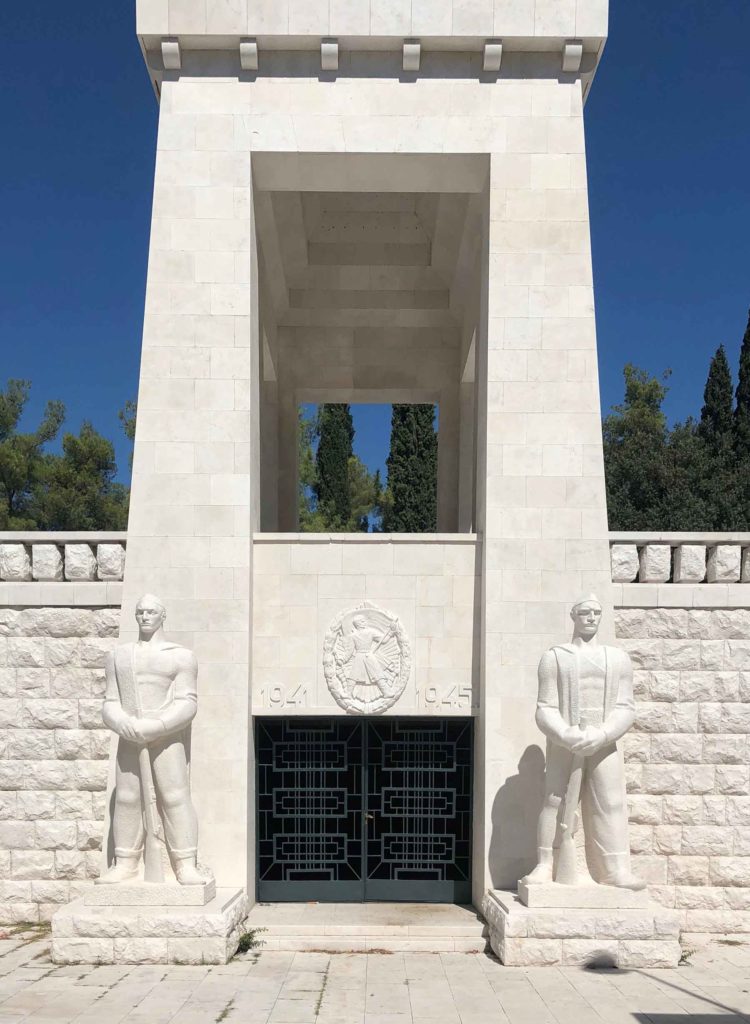
By 1943, Italy had surrendered and as hope dimly peeked out over the horizon for the people of Podgorica, the Nazi Army swooped in and brought a second round of occupation to the region. Fortunately, word had spread to Montenegro about the death camps and mass killings of the Jews at the hands of the Germans. Before the Nazis could arrive in Podgorica, Montenegrins hid their members of the Jewish community as best they could. Montenegro is one of the only countries in Europe to have been occupied by the Nazi Army and not have a concentration camp built within its borders.
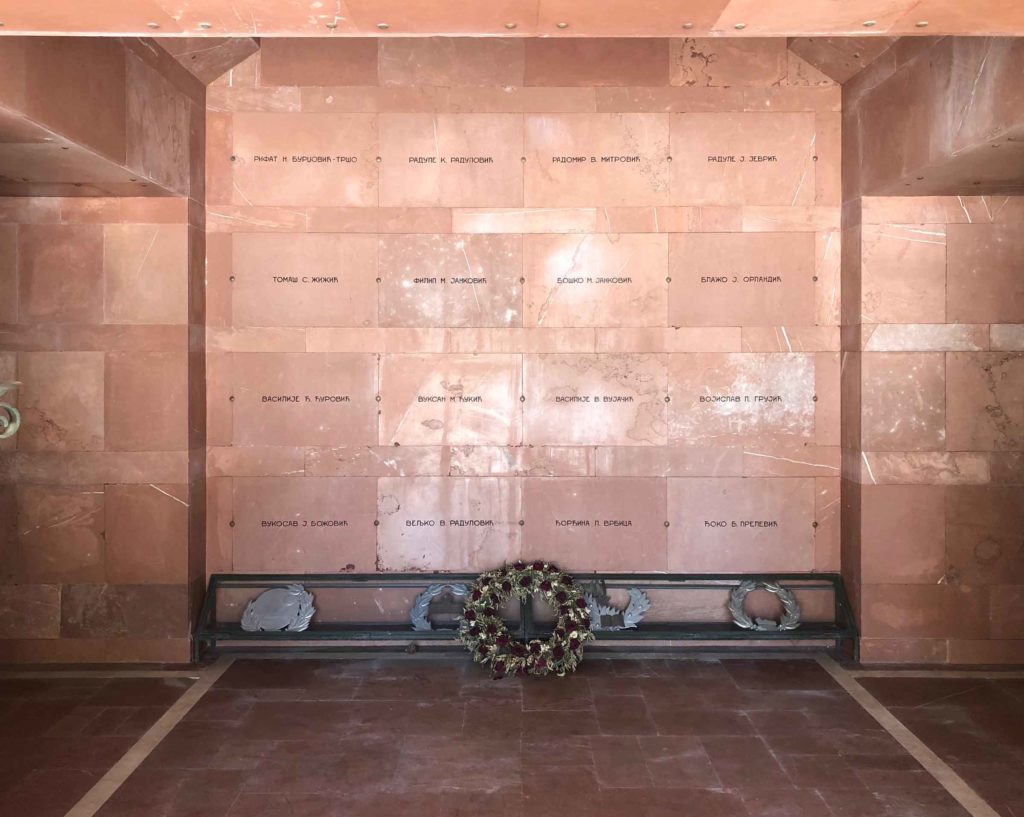
After the war, July 13th became a national holiday known as The Day of the Uprising of the People of Montenegro. This monument on Gorica Hill was unveiled on July 13, 1957, with Tito in attendance. Throughout the years, most official ceremonies have taken place in front of the monument, a practice that continues to this day.
Skupština Crne Gore (Parliament of Montenegro)

When Tito assigned architects to redesign Titograd’s government offices, the old-school Baroque stylings were out and the brutalist new-school was in session. The Parliament was built in 1954 and still houses the governing body today.
Before my visit, I exchanged several emails with the person responsible for handling tours of the Parliament. It would have been possible to see the interior chambers and learn how the present-day government functions, but Parliament was not in session during my visit and thus the tour fell through. Still, this is a good lesson that it never hurts to email the staff of a theater/opera house/government institution/historical site that normally doesn’t allow visitors to see if you are able to be escorted through the grounds. The answer may still be no, but it never hurts to ask.
Predsjednik Crne Gore (Presidential Offices of Montenegro)
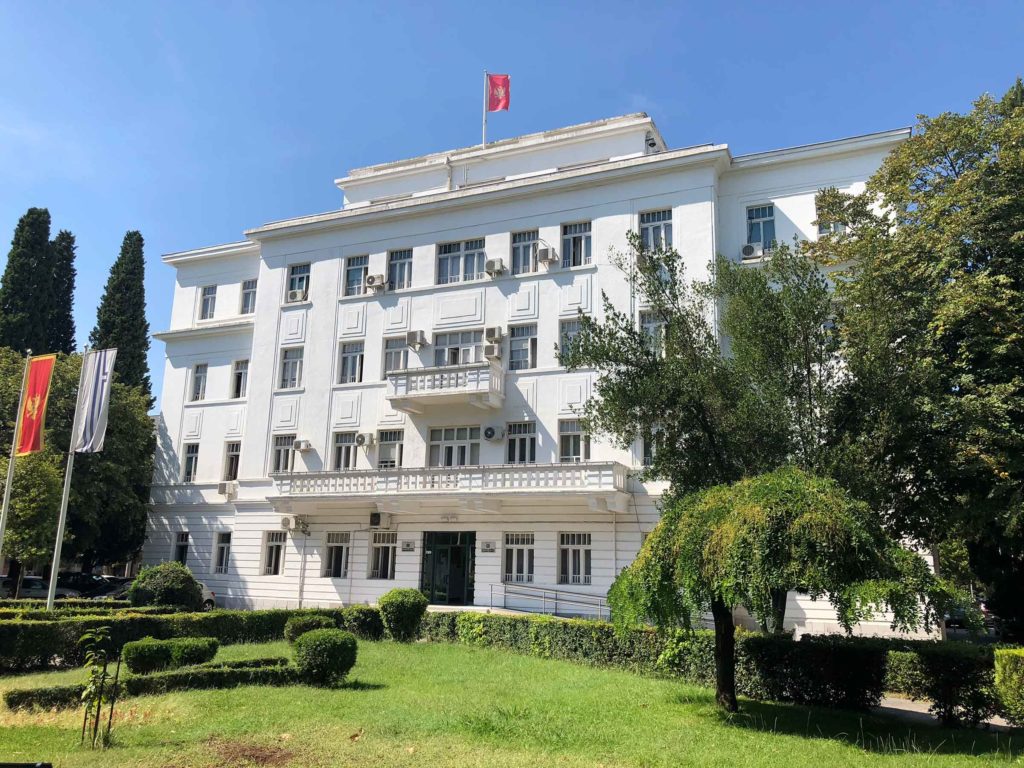
Right next door to the Parliament is the office of the President of Montenegro. The President’s official residence is the Blue Palace in Cetinje, but when he (or she) is in Podgorica, this is where the work is done. Milo Đukanović, the current President, has been plagued with scandals and accusations of corruption. Protests are frequently held demanding for his resignation, but Đukanović maintains his innocence and staunchly defends his right to remain in power.
Trg Nezavisnosti/Trg Republike (Independence Square/Republic Square)
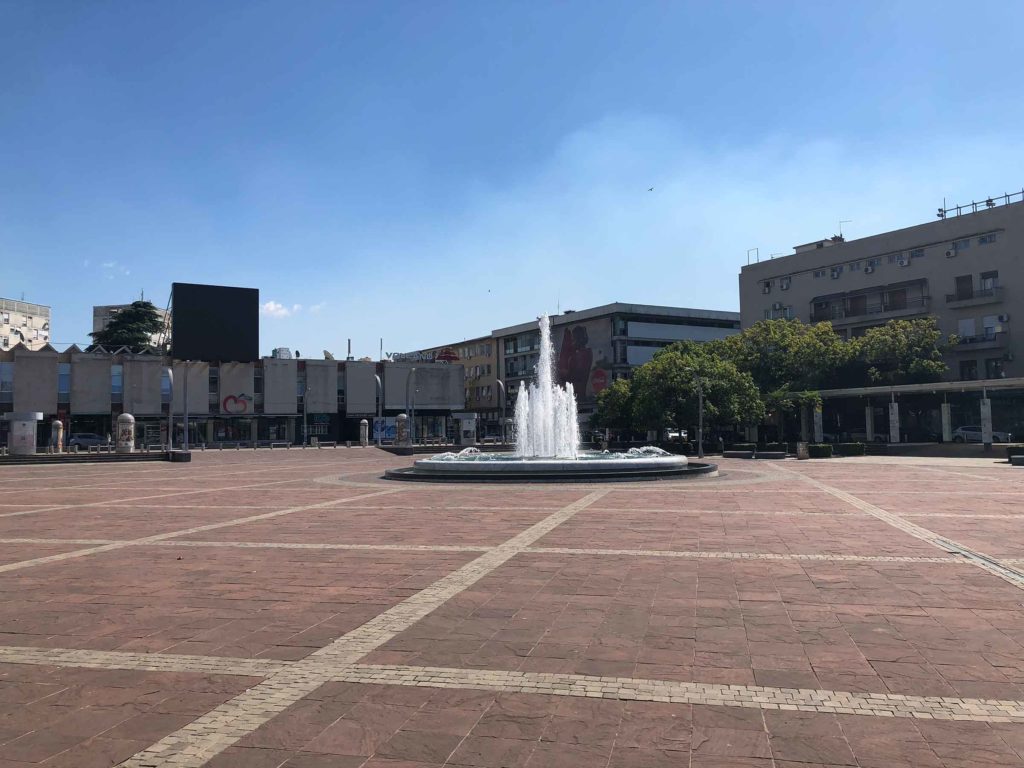
What’s in a name?
Before Montenegro achieved independence in 2006, its central square (once a parking lot) was known as Trg Ivana Milutinovića (Ivan Milutinović Square). Milutinović was one of Tito’s Partisan generals and helped lead the charge during the July 13th Uprisings in 1941. Unlike Tito, Milutinović did not survive the war and Titograd’s main square was christened accordingly thereby honoring the memory of the socialist leader’s close comrade.
Post-independence, the government renamed Podgorica’s central gathering place Republic Square; 2019 saw a third name in change in so many years to Independence Square. Just to make things a little more confusing, everyone still refers to it as Republic, and not Independence Square. (If you’re drawing a blank stare when asking for directions, remember that the National Library sits on the west side of square, so mention that and people will know what you’re talking about.)
Independence/Republic Square has also been the epicenter of political activity in Podgorica. It was here that people gathered to debate the benefits of sovereignty before voting on the referendum that would grant them independence in 2006. This is also the site of the rallies against Đukanović. (Of course, less controversial things like the Podgorica Christmas Market are held here, but that’s not as exciting as people fighting for their freedom!)

Lined with palm trees and bathed in the soothing mist of its central fountain, the square is the laid-back place to be in the evenings. The streets adjacent to the square contain Podgorica’s best restaurants and pedestrian-only shopping streets. If the Turkish bakeries in Stara Varoš represent the city’s past, the gastronomic delights of Nova Varoš (New Town) speak to Podgorica’s forward-thinking future. Restobar Štrudla is the capital’s first vegetarian restaurant- and yes, I ate there every night.
Sometimes history can be reduced to a mind-numbing chapter in a school textbook or be trapped in a ho-hum documentary you barely can pay attention to. This doesn’t need to be the case when you’re traveling (or at home). History is all around you. Simply walking through a city and soaking up your surroundings can expose you to a wealth of knowledge. This osmosis approach works! Taking the time to understand the past can reward you in the present ten-fold.
